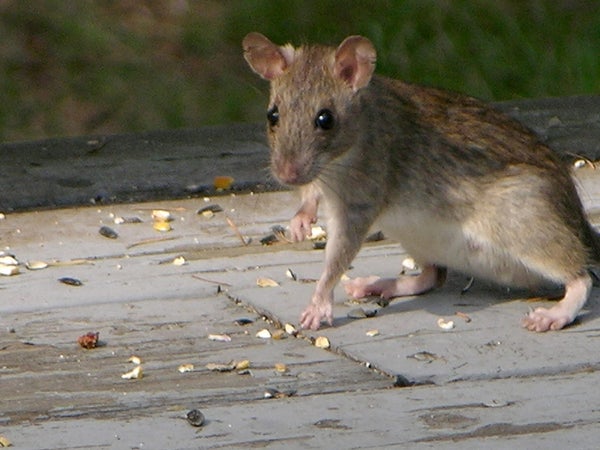This article was published in Scientific American’s former blog network and reflects the views of the author, not necessarily those of Scientific American
Cats are number one—the number one invasive killer of species around the world. According to research published this month in the Proceedings of the National Academy of Sciences, feral cats can be blamed for 63 modern-day extinctions. That’s 40 bird species, 21 mammals and 2 reptiles, or 26 percent of extinctions for those categories.
But cats are not alone. According to the paper, cats and 29 other invasive mammalian predator species have caused at least 142 bird, mammal and reptile extinctions around the world—or 58 percent of all extinctions with those species groups—and currently threaten nearly 600 additional species.
Extinctions cited in the paper include Japan’s Bonin wood pigeon (Columba versicolor), which was killed off by rats and cats; the Grey's wallaby of Australia (Macropus greyi), which fell victim to red foxes; the Puerto Rican hutia (Isolobodon portoricensis), which first suffered from the introduction of black rats before being wiped out by Indian mongooses; and Hawaii’s kāmaʻo (aka the large Kauaʻi thrush, Myadestes myadestinus), once the most common bird on its home island, which was ultimately driven extinct by rats and feral pigs.
On supporting science journalism
If you're enjoying this article, consider supporting our award-winning journalism by subscribing. By purchasing a subscription you are helping to ensure the future of impactful stories about the discoveries and ideas shaping our world today.
Cats may take the top killer slot, but collectively rats and mice are even worse. The paper links rodents to 75 extinctions—52 birds, 21 mammals and 2 reptiles, totaling 30 percent of all modern extinctions for those species groups. Dogs, red foxes, pigs and Indian mongooses each have their own pretty high tallies—each are blamed for 9 to 11 extinctions.
Not every species on the dirty 30 list has caused extinctions, but all are pretty bad. Take your adorable European hedgehog, for example. These cute little critters may not have completely eliminated any species, but they have caused problems in several places, most notably in New Zealand, where they eat vast quantities of bird eggs, chicks, lizards, and a variety of invertebrates. Some species populations have dropped by 39 percent once hedgehogs entered the local picture.
The impact of all of these invasive predators—which usually traveled to new lands with human settlers and commercial vessels—may not yet be fully known. The authors noted that at least 23 species affected by these predators are currently listed as “possibly extinct,” meaning the death toll may already be much higher. They also commented that reptiles in general are poorly studied, so more species may be threatened or extinct than we currently realize.
The list of the 30 worst invasive mammalian predators appears below:
African civet (Civettictis civetta)
American mink (Neovison vison)
Andean fox (Lycalopex culpaeus)
Black rat (Rattus rattus)
Brown rat (Rattus norvegicus)
Common brushtail possum (Trichosurus vulpecula)
Common genet (Genetta genetta)
Common opossum (Didelphis marsupialis)
Common tenrec (Tenrec ecaudatus)
Crab-eating macaque (Macaca fascicularis)
Domestic cat (Felis catus)
Domestic dog (Canis familiaris)
Eurasian wild pig (Sus scrofa)
European hedgehog (Erinaceus europaeus)
European pine marten (Martes martes)
Ferret (Mustela putorius furo)
House mouse (Mus musculus)
Indian brown mongoose (Herpestes fuscus)
Japanese weasel (Mustela itatsi)
Least weasel (Mustela nivalis)
Mona monkey (Cercopithecus mona)
Polynesian rat (Rattus exulans)
Raccoon (Procyon lotor)
Red fox (Vulpes vulpes)
Ricefield rat (Rattus argentiventer)
Ring-tailed coati (Nasua nasua)
Siberian weasel (Mustela sibirica)
Small Asian mongoose (Herpestes auropunctatus)
Small Indian civet (Viverricula indica)
Stoat (Mustela erminea)
Previously in Extinction Countdown:
